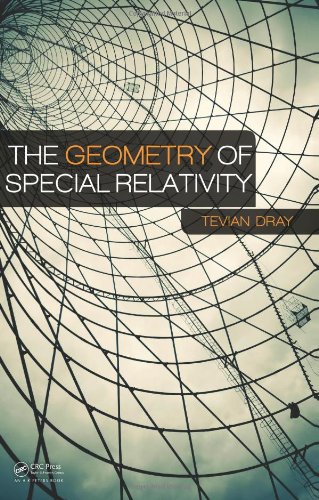

Most ebook files are in PDF format, so you can easily read them using various software such as Foxit Reader or directly on the Google Chrome browser.
Some ebook files are released by publishers in other formats such as .awz, .mobi, .epub, .fb2, etc. You may need to install specific software to read these formats on mobile/PC, such as Calibre.
Please read the tutorial at this link: https://ebookbell.com/faq
We offer FREE conversion to the popular formats you request; however, this may take some time. Therefore, right after payment, please email us, and we will try to provide the service as quickly as possible.
For some exceptional file formats or broken links (if any), please refrain from opening any disputes. Instead, email us first, and we will try to assist within a maximum of 6 hours.
EbookBell Team

0.0
0 reviewsThe Geometry of Special Relativity provides an introduction to special relativity that encourages readers to see beyond the formulas to the deeper geometric structure. The text treats the geometry of hyperbolas as the key to understanding special relativity. This approach replaces the ubiquitous γ symbol of most standard treatments with the appropriate hyperbolic trigonometric functions. In most cases, this not only simplifies the appearance of the formulas, but also emphasizes their geometric content in such a way as to make them almost obvious. Furthermore, many important relations, including the famous relativistic addition formula for velocities, follow directly from the appropriate trigonometric addition formulas.
The book first describes the basic physics of special relativity to set the stage for the geometric treatment that follows. It then reviews properties of ordinary two-dimensional Euclidean space, expressed in terms of the usual circular trigonometric functions, before presenting a similar treatment of two-dimensional Minkowski space, expressed in terms of hyperbolic trigonometric functions. After covering special relativity again from the geometric point of view, the text discusses standard paradoxes, applications to relativistic mechanics, the relativistic unification of electricity and magnetism, and further steps leading to Einstein’s general theory of relativity. The book also briefly describes the further steps leading to Einstein’s general theory of relativity and then explores applications of hyperbola geometry to non-Euclidean geometry and calculus, including a geometric construction of the derivatives of trigonometric functions and the exponential function.